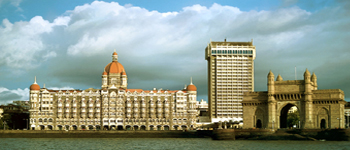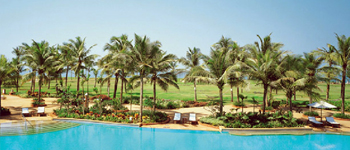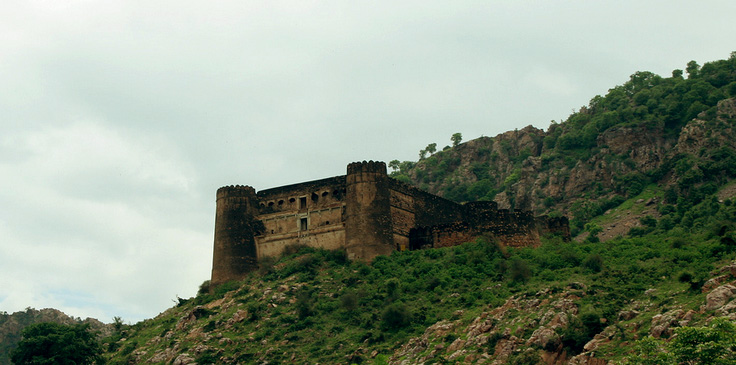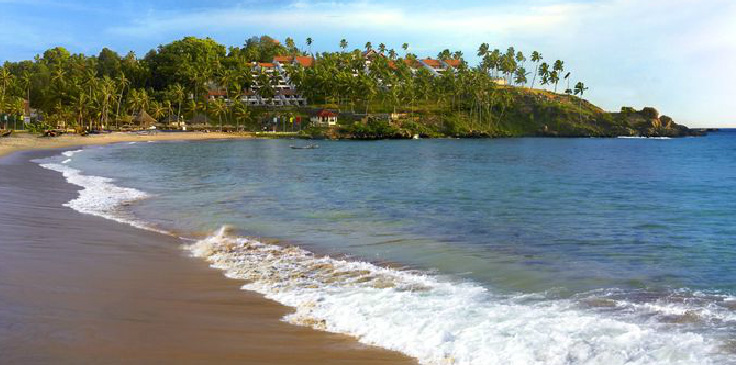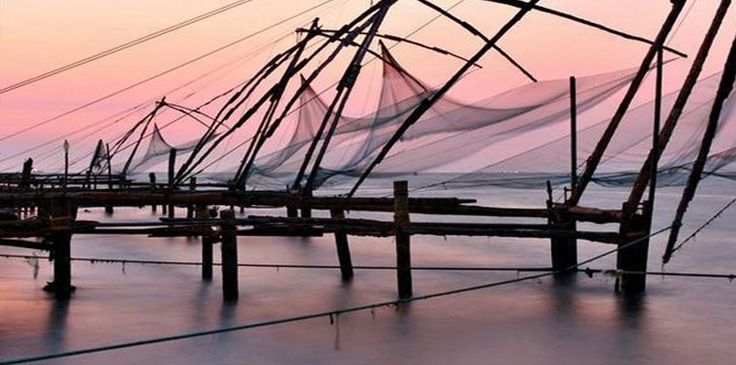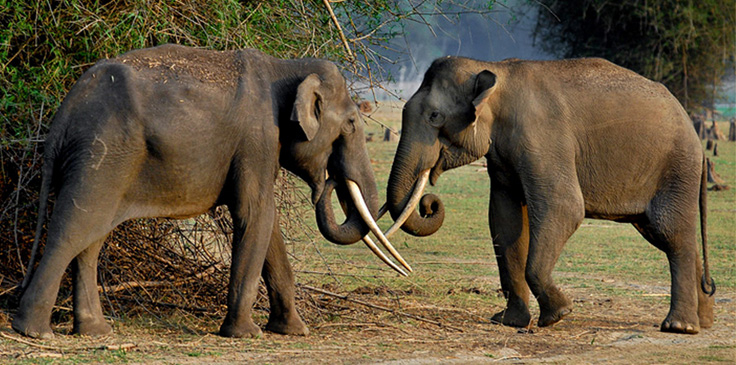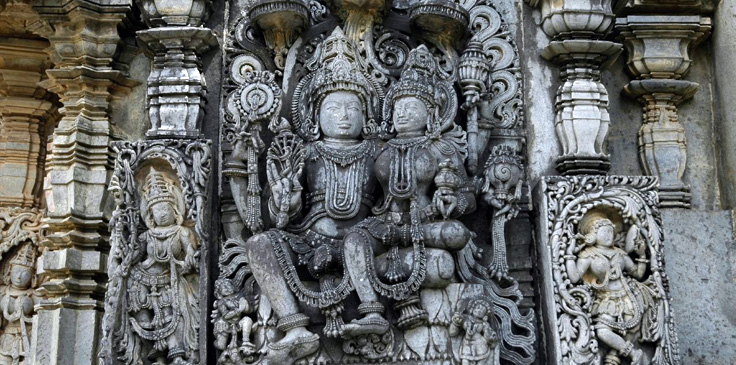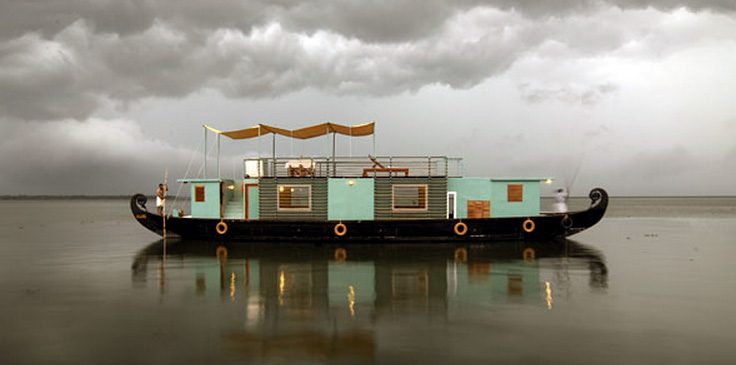
The Kerala backwaters are a chain of brackish lagoons and lakes lying parallel to the Arabian Sea coast (known as the Malabar Coast) of Kerala state in southern India. The network includes five large lakes linked by canals, both man-made and natural, fed by 38 rivers, and extending virtually half the length of Kerala state. The backwaters were formed by the action of waves and shore currents. These had created low barrier islands across the mouths of many rivers flowing down from the Western Ghats range. The Kerala Backwaters are a network of interconnected canals, rivers, lakes and inlets, a labyrinthine system, which is formed by more than 900 km of waterways, and sometimes it is compared to the American Bayou. In the midst of this landscape there are a number of towns and cities, which serve as the starting and end points of backwater cruises. The backwaters have a unique ecosystem – freshwater from the rivers meets the seawater from the Arabian Sea. In certain areas, such as the Vembanad Kayal, where a barrage has been built near Kumarakom, salt water from the sea is prevented from entering the deep inside, keeping the fresh water intact. Such fresh water is extensively used for irrigation purposes. Many unique species of aquatic life including crabs, frogs and mudskippers, water birds such as terns, kingfishers, darters and cormorants, and animals such as otters and turtles live in and alongside the backwaters. Palm trees, pandanus shrubs, various leafy plants and bushes grow alongside the backwaters, providing a green hue to the surrounding landscape. Vembanad Kayal is the largest of the lakes, covering an area of 200 km▓, and bordered by Alappuzha (Alleppey), Kottayam, and Ernakulam districts.
The port of Kochi (Cochin) is located at the lake’s outlet to the Arabian Sea. Alleppey, “Venice of the East”, has a large network of canals that meander through the town. Vembanad is IndiaÆs longest lake. The kettuvallams (Kerala houseboats) in the backwaters are one of the prominent tourist attractions in Kerala. More than 2000 kettuvallams ply the backwaters, the kettuvallams were traditionally used as grain barges, to transport the rice harvested in the fertile fields alongside the backwaters. Thatched roof over wooden hulls, 100 feet (30 m) in length, provided protection from the elements. At some point in time, the royalty used the boats as living quarters. Converted to accommodate tourists, the houseboats have become floating cottages with a sleeping area, western-style toilets, a dining area and a sit out on the deck. Most tourists spend the night on a houseboat. Food is cooked on the board by the accompanying staff û mostly having a flavor of Kerala. The houseboats are of various patterns and can be hired as per the size of the family or visiting group. The living-cum-dining room is usually open on at least three sides providing a grand view of the surroundings, including other boats, throughout the day when it is on the move. It is brought to a standstill at times of taking food and at night. Ketuvallams are motorized but generally proceed at a slow speed for smooth travel. All ketuvallams have a generator and most of the bedrooms are air-conditioned.
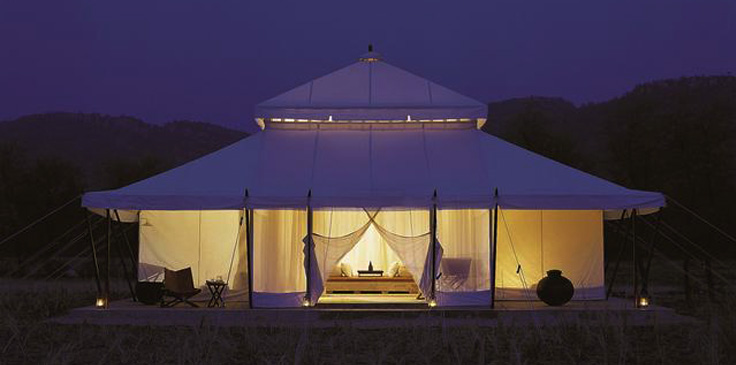
 May 24th, 2012
May 24th, 2012  admin
admin  Posted in
Posted in 
